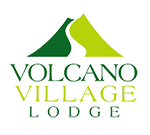When is the best time to visit Hawaii Volcanoes National Park?
Arrive Early, Embrace the Evenings, and Find Solitude Amongst the Crowds
A Popular Place: Plan Around the Crowds
Whether it’s the coveted valley floor of Yosemite, the mobs of people surrounding the geysers of Yellowstone, or the lines of cars waiting to enter Hawaii Volcanoes National Park, our national parks are hugely popular, drawing visitors from across the globe. The visitation numbers were down in 2020 due to the pandemic, but for the last 50 years running, Hawaii Volcanoes National Park has consistently drawn 1-2 million visitors a year. So, do plan your visit, but plan it wisely, knowing that crowds are to be expected.
The Reward and Serenity of an Early Start
Similar to many national parks, the busiest time of day at Hawaii Volcanoes National Park is from late morning until late afternoon. As they warn on their website, parking within the national park is limited and usually fills up by late morning. However, early risers can take advantage of the quiet hours before the crowds arrive and catch a sunrise at the Kilauea summit, serene and all the more majestic with fewer people around. When the trails become packed in the afternoon, head out for a drive on the Chain of Craters Road, where you will trace a semi-circle around Kilauea, and there are less-crowded stops along the route. As you go, there are several places to pull off and take in the stunning landscapes of the lava-filled coastline, even witnessing live lava flows during active volcanic periods. There, you’ll see how volcanic activity expanded the big island by over 875 acres in 2018 alone, a marvelous example of geology in action.
Stay Late: Starscapes and a Night Sky Like No Other
Although the visitor center and visitor services are only open from 10 am – 5 pm, the park itself is open 24 hours a day. Given their proximity to the park, staying at Volcano Village Lodge provides a unique opportunity to get out and explore during the peaceful evening hours. Although certain trails are better left for the daytime, one can take an evening drive and, pulling over just about anywhere, look up and be greeted with stargazing of the highest order. Isolated in the vast Pacific Ocean, a world away from the light pollution of the mainland, the night sky of Hawaii will leave you in awe.
With your itinerary in hand, book your stay today!
